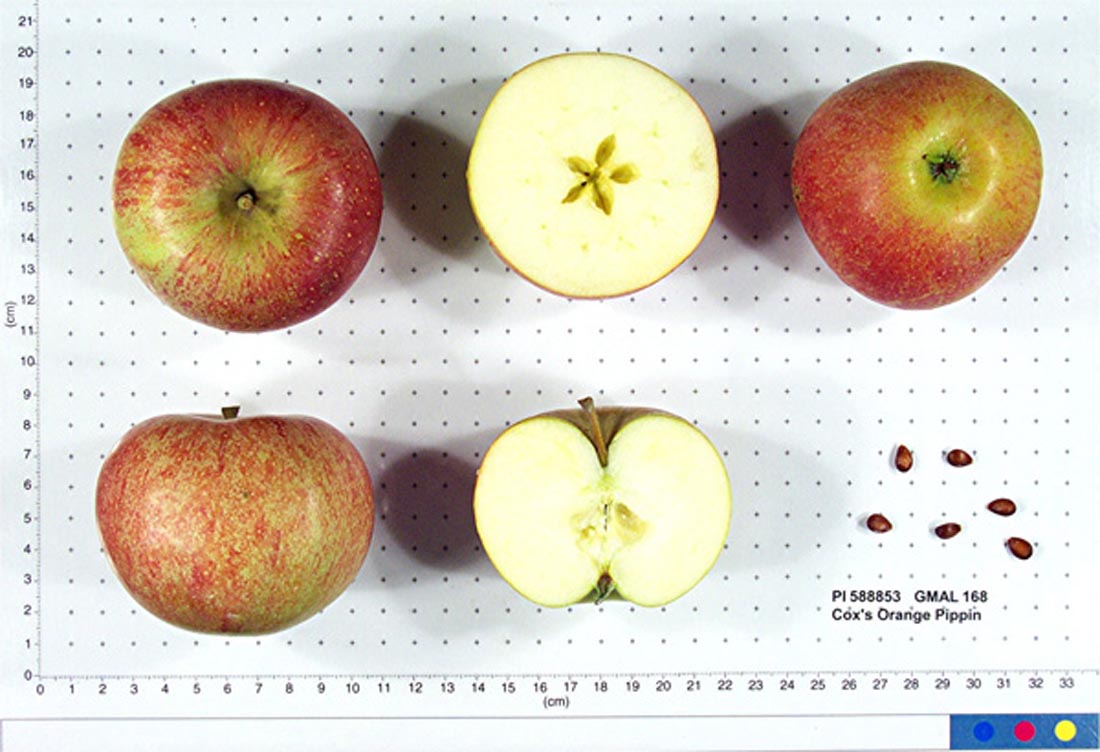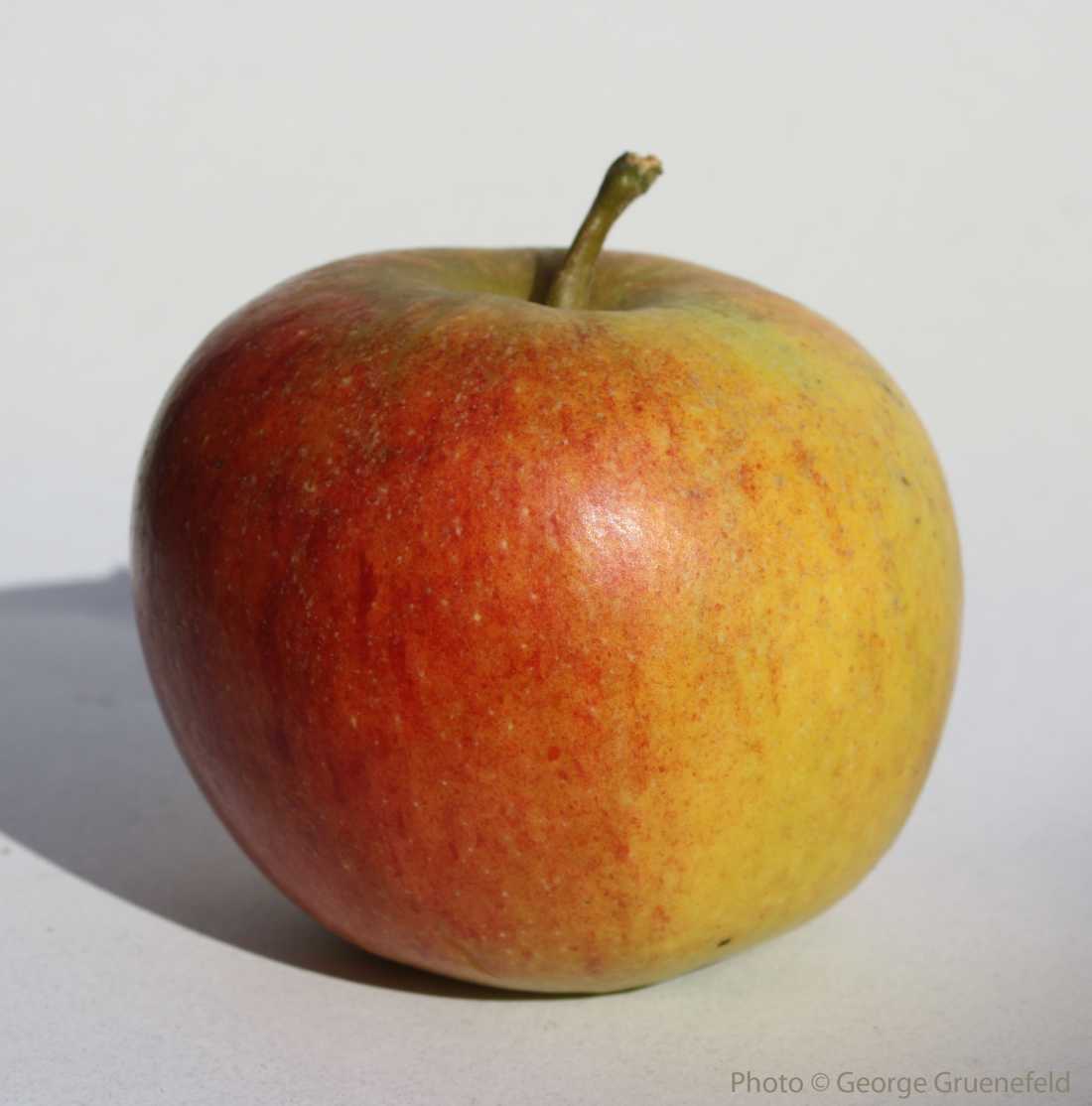Pomiferous
Welcome to the world's most extensive apples (pommes) database.
Information on over 7,000 apples is available here, all carefully researched and provided in a way that is easy to navigate.
Cox’s Orange Pippin
type: Dessert
synonyms: Cox, Cox's Orange (there is also a Cox Orange Otago which is not the same variety), Cox's Orange Reinette.
summary: Best eaten fresh. Considered one of the finest dessert apples.
identification: Medium size, round and slightly conic. Skin is yellowish green to golden yellow with a orange red blush and broken stripes. The eye is medium to large, partly open with long and pointed slender petals, set in a medium deep, wide basin which is surrounded by a faintly knobbed crown. The stem is medium long and medium thickness, often with a fleshy swelling off to one side, set in a moderately deep and funnel shaped cavity which is usually russeted with rays extend onto the shoulder. Light coloured, russeted lenticels are sparsely scattered toward the stem end.
characteristics: Flesh is cream coloured, fine-grained and firm. Very juicy and sweet-tart when first harvested but maturing sweet. Aromatic. Taste is somewhat spicy, highly complex with hints of pear, melon and oranges. High Vitamin C content 10.5 mg/100g.
origins: Raised by retired brewer and amateur British horticulturist Richard Cox who, in 1825, planted some open-pollinated pippins from a Ribston Pippin on his one-acre hobby garden at Colnbrook Lawn near Slough, Buckinghamshire (U.K.). Two of the seeds took: one became Cox’s Orange Pippin, the other Cox’s Pomona . It was introduced for sale in 1850 by Smales & Son Nurseries and received an Royal Horticultural Society Award of Merit and First Class Certificate in 1962. The original tree was destroyed by a storm in 1911.
cultivation: Moderately vigorous and upright spreading. The fruit develops on spurs. Late bloomer resistant to frosts. Difficult to grow in anything but a dry climate and somewhat fussy in general regarding growing conditions, tending to produce small fruit in less than ideal environment. Well suited to espalier training. Requires potash.
progeny: The Cox has been widely used in the creation of new varieties, with over 60 direct progeny to date, among them Gala and Sansa .
cold storage: Stores well for up to three months, improving the flavour but eventually losing their crispness.
vulnerabilities: Prone to disease when grown in damp, cold areas, particularly scab and canker. Very susceptible to mildew. Highly susceptible to fire blight
harvest: Late in the fourth period (130 to 160 days after petal fall).
notes: The seeds can be heard rattling when a fully mature apple is shaken.
pollination group: C
pollination peak: 11
ploidism: Diploid. Self fertile, but crops improve with a compatible pollinizer.
cold storage weeks: 12
brix: 12.9
acidity: 9.2
harvest period: 4
hardiness: 4
sg: 1.0521
Donate a cider?
©2016-2021 Pomiferous.com. All rights reserved

